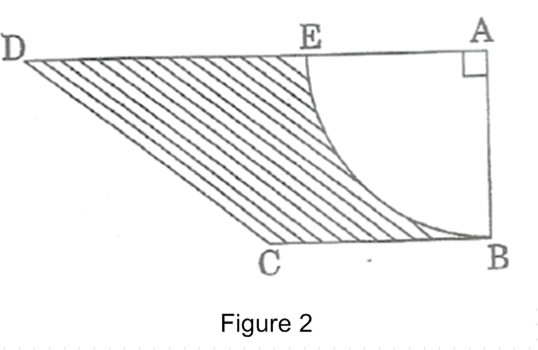 Short Answer Type
Short Answer TypeFind the number of natural numbers between 101 and 999 which are divisible by both 2 and 5.
Number which are divisible by both 2 and 5 are the number which are divisible by 10.
Thus we need to find the number of natural numbers between 101 and 999 which are divisible by 10.
The first number between 101 and 999 which is divisible by 10 is 110.
And the last number between 101 and 999 which is divisible by 10 is 990.
Using the formula for Arithmetic progression where first term (a) = 110, and last term (Tn) = 990 and difference (d) =10.
Tn = a+(n-1) x d
990 = 110+(n-1) x 10
880 = (n-1) x 10
88 = n-1
n = 89
Hence there are 89 natural numbers between 101 and 999 which are divisible by both 2 and 5.
 Long Answer Type
Long Answer TypeThe largest possible sphere is carved out of a wooden solid cube of side 7 cm. Find the volume of the wood left.
Water in a canal, 6 m wide and 1.5 m deep, is flowing at a speed of 4 km/h. How much area will it irrigate in 10 minutes, if 8 cm of standing water is needed for irrigation?
In Figure 2, ABCD is a trapezium of area 24.5 sq. cm. In it, AD|| BC, DAB = , AD = 10 cm and BC = 4 cm. If ABE is a quadrant of a circle, find the area of the shaded region.

Find the ratio in which the line segment joining the points A(3,- 3) and B(- 2, 7) is divided by x-axis. Also find the coordinates of the point of division
The sum of the 2nd and the 7th terms of an AP is 30. If its 15th term is 1 less than twice its 8th term, find the AP.
Draw a line segment AB of length 8 cm. Taking A as centre, draw a circle of radius 4 cm and taking B as centre, draw another circle of radius 3 cm. Construct tangents to each circle from the centre of the other circle.
